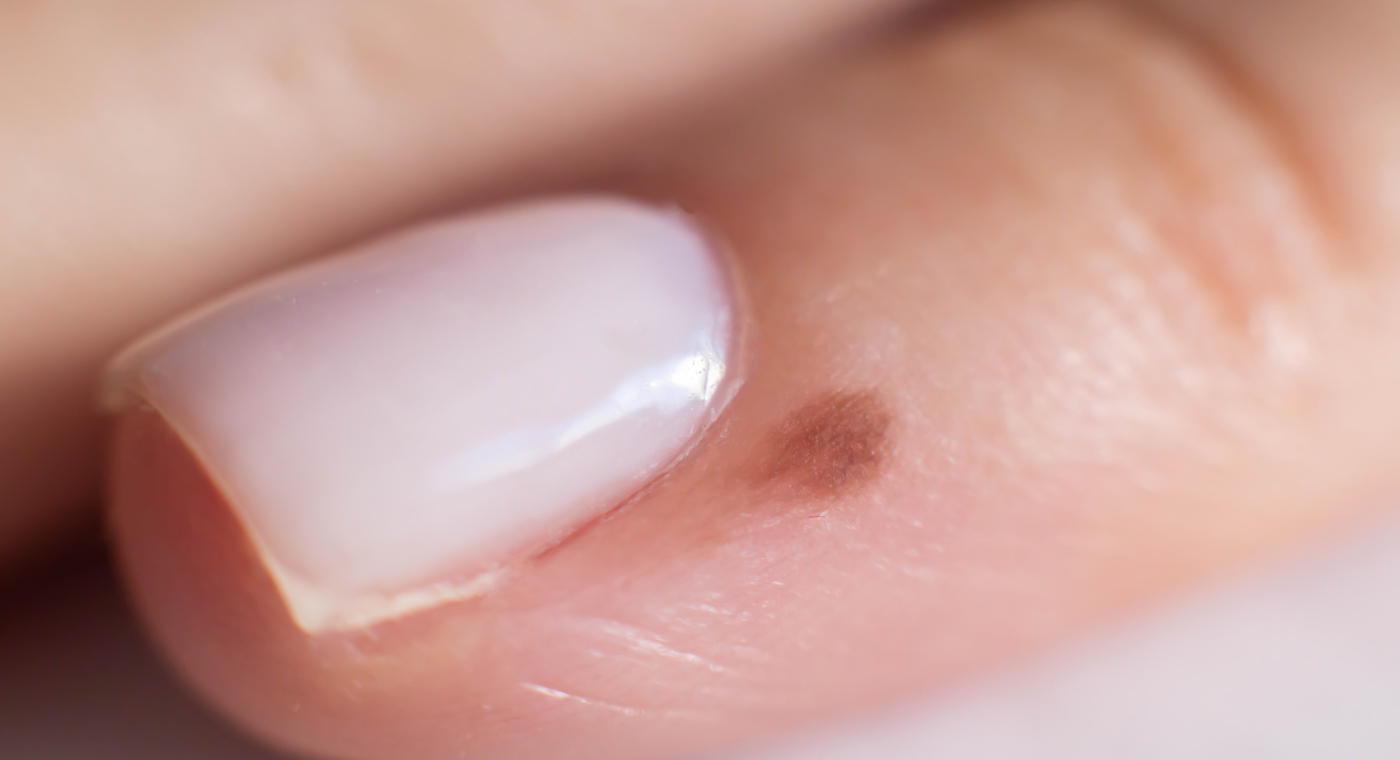Blog
Best Natural Remedies for Brittle Nails at Home

Beyond just being a cosmetic concern, brittle nails may indicate underlying health issues or be the product of environmental factors. There are a few at-home natural nail treatments you can try to strengthen and beautify your nails, regardless of whether they break, split, or peel. This post explores some of the best at-home remedies for brittle nails and offers doable suggestions to improve the condition of your nails.
Understanding Brittle Nails
It’s important to know what causes brittle nails before attempting any remedies. Nails that are prone to breaking, peeling, or splitting easily are known as brittle nails. Typical reasons include:
Nutritional Deficiencies:
Zinc and iron deficiency, as well as a lack of biotin and other vital nutrients like vitamins A, C, D, and E, can deteriorate nails.
Dehydration:
Being too dry or brittle results from not getting enough moisture.
Environmental Factors:
The nails can sustain damage from repeated exposure to water, strong chemicals, and high temperatures.
Health Conditions:
Psoriasis, eczema, and hypothyroidism are a few ailments that can have an impact on nail health.
Natural Remedies for Brittle Nails

Moisturize with Natural Oils
Coconut Oil: Rich in fatty acids and vitamin E, coconut oil is excellent for moisturizing and nourishing nails. Apply a small amount of coconut oil to your nails and cuticles before bed. Massage gently to enhance absorption.
Olive Oil: Another great option, olive oil is packed with antioxidants and vitamins that can help strengthen nails. Warm a small amount of olive oil and soak your nails in it for about 10-15 minutes. Alternatively, you can massage the oil into your nails and cuticles.
Jojoba Oil: Jojoba oil closely resembles the natural oils produced by the skin. It helps in moisturizing and can improve nail flexibility. Apply jojoba oil to your nails and cuticles daily.
Add Epsom Salt to Soak
Epsom salt is well-known for its therapeutic qualities and has the ability to fortify weak nails. Soak your nails for ten to fifteen minutes in warm water containing dissolved Epsom salt. This soak can enhance the flexibility and texture of your nails.
Apply olive oil and lemon juice.
Vitamin C, which is abundant in lemon juice, is vital for the synthesis of collagen and the health of nails. Olive oil and lemon juice can be combined to make a healthy nail treatment. Equal parts lemon juice and olive oil should be combined and applied to your nails. Before rinsing, leave it on for roughly ten minutes. Your nails can become stronger and more vibrant with this treatment.
Apply Garlic Paste
Garlic is known for its antifungal and antibacterial properties. It also contains sulfur, which can promote nail growth and strength. Crush a few garlic cloves and mix them with olive oil to form a paste. Apply this paste to your nails and leave it on for about 10-15 minutes. Rinse thoroughly with warm water. Be cautious if you have sensitive skin, as garlic can be irritating.
Incorporate Biotin-Rich Foods

Biotin, also known as vitamin B7, is crucial for maintaining healthy nails. Including biotin-rich foods in your diet can improve nail strength. Foods high in biotin include eggs, nuts, seeds, sweet potatoes, and avocados.
Keep a Well-Balanced Diet
For healthy nails, a well-balanced diet high in vitamins and minerals is crucial. Include in your diet a range of fruits, vegetables, whole grains, and lean proteins. For strong nails, minerals like zinc, iron, and vitamins A, C, and E are especially helpful.
Steer clear of harmful chemicals
Nails can become weaker due to exposure to household cleaning products and frequent use of nail polish removers. To shield your nails from abrasive chemicals, use gloves when cleaning and choose nail polish removers without acetone.
Drink plenty of water
Keeping your body and nails hydrated is achieved through drinking lots of water. To keep your nails healthy and your body hydrated overall, try to consume at least 8 glasses of water each day.
Protect Your Nails
Protect your nails from physical damage by wearing gloves during activities that may cause trauma. Avoid using your nails as tools and trim them regularly to prevent breakage.
Conclusion
Although brittle nails can be annoying, you can enhance their strength and appearance with the correct natural remedies and preventive measures. To promote healthier nails, include nutrient-rich meals, moisturizing oils, and protective techniques in your daily routine. Keep in mind that consistency is essential. If your nail problems don’t go away, consulting a professional can help address any underlying health issues.
By following these steps, you can effectively maintain the health of your nails at home with natural remedies and enjoy stronger, more resilient nails.
FAQs About Brittle Nails and Natural Remedies
Q1: How long does it take to see results from natural remedies?
A1: The time it takes to see results from natural remedies can vary depending on the severity of your nail condition and consistency in applying the remedies. Generally, you may start to notice improvements within a few weeks of regular use.
Q2: Can I use these remedies if I have nail polish on?
A2: It’s best to remove nail polish before applying natural remedies to ensure that the treatments can penetrate the nail and cuticle effectively. After applying the remedy, you can reapply nail polish if desired.
Q3: Are there any side effects to using these natural remedies?
A3: Most natural remedies are safe, but some individuals may experience sensitivity or allergic reactions. It’s advisable to do a patch test before applying any new treatment to your nails. If you experience redness, itching, or swelling, discontinue use.
Q4: Can brittle nails be a sign of a more serious health issue?
A4: While brittle nails can often be attributed to external factors or nutritional deficiencies, they can sometimes indicate underlying health conditions such as thyroid disorders or vitamin deficiencies. If you notice persistent or severe nail problems, it’s a good idea to consult a healthcare professional for a thorough evaluation.
Q5: How can I prevent brittle nails in the future?
A5: To prevent brittle nails, maintain a healthy diet rich in essential vitamins and minerals, stay hydrated, protect your nails from harsh chemicals, and practice good nail hygiene. Regularly moisturizing and avoiding overuse of nail polish removers can also help keep your nails strong.
Blog
what does it mean when you have a beauty mark on your finger?

Have you ever mused over the enigmatic allure of a beauty mark gracing your finger? These tiny yet distinct skin features have captivated human curiosity for generations. Beyond their medical relevance, beauty marks are often seen as intricate symbols of individuality, holding deeper meanings that resonate with personal and cultural interpretations. Let’s unravel the mystery behind these marks and their potential significance.
What Constitutes a Beauty Mark?
Unveiling the Mystique
A beauty mark, colloquially termed a “mole,” is a minute skin feature, typically darker than its surrounding canvas. These marks can either rest flat against the skin or rise slightly above it. Often romanticized as “nature’s embellishments,” they evoke uniqueness and charm, capturing the imagination of those who bear them.

Distinction Between Moles and Other Marks
Not every skin blemish qualifies as a beauty mark. True moles stem from localized melanin concentrations, usually benign, whereas other skin features might emerge from various causes with differing medical implications.
Cultural Views on Finger Beauty Marks
Eastern Philosophies
In many Asian traditions, beauty marks are imbued with profound meanings. A mark on the finger, for example, may symbolize artistic prowess or financial aptitude, often viewed as a harbinger of fortune.
European Mysticism
During medieval European epochs, hand-based marks were enveloped in mysticism. These marks were perceived as divine imprints, signifying fate’s touch—a dual-edged omen of promise and peril.
Modern Interpretations
In today’s aesthetic-driven world, beauty marks are celebrated as distinct elements of individuality. While some attribute spiritual or astrological connotations to them, they are largely appreciated for their role in personal identity and charm.
Deciphering the Meaning of Finger Beauty Marks
Index Finger
A mark here often denotes unwavering determination and innate leadership. It suggests an individual capable of steering paths and inspiring others with resolute ambition.
Middle Finger
This placement may signify responsibility and maturity in decision-making. Linked astrologically to Saturn, it symbolizes emotional depth and a grounded nature.
Ring Finger
A beauty mark on this finger embodies love, loyalty, and romantic sensibilities. Additionally, it is associated with artistic talent and an appreciation for beauty.
Little Finger
On the pinky, such marks represent intelligence, eloquence, and strategic thinking. Bearers are often gifted in communication and adept at navigating complex situations.
Astrological and Mystical Connotations
Planetary Connections
In astrology, each finger corresponds to a celestial entity, influencing the interpretation of a beauty mark. For instance, the Sun governs the ring finger, suggesting creativity and ambition for those marked there.
Astrological Readings
Astrologers often combine the location of beauty marks with natal chart analysis, seeking to unveil hidden meanings tied to one’s destiny.
Psychological and Social Dimensions
Impact on Self-Image
Beauty marks, particularly on the hands, hold the power to shape self-perception. For some, they are a source of confidence; for others, they may spark introspection or insecurity.
Embracing Uniqueness
Each beauty mark tells a story as distinctive as the person it adorns, serving as a symbol of individuality and a reminder of human diversity.
Beauty Marks in Popular Culture
Celebrity Icons
Famous figures such as Cindy Crawford have redefined beauty standards, with their beauty marks becoming emblematic features of their identity and appeal.
Media Influence
The portrayal of beauty marks in media often elevates them as symbols of natural elegance, reinforcing the narrative of self-acceptance and individual beauty.
Caring for Your Beauty Mark
Dermatological Guidance
Regular skin evaluations are crucial to monitor any changes in beauty marks. Protecting them from excessive sun exposure with SPF products is highly recommended.
When to Seek Medical Attention
Consult a healthcare provider if a beauty mark changes in size, shape, or color, as these could indicate potential health concerns.
Modifying the Appearance of Beauty Marks
Laser Treatments
Modern advancements in dermatology provide safe methods, such as laser therapy, for removing beauty marks if desired.
Cosmetic Concealment
For those preferring a temporary solution, professional-grade makeup offers effective coverage, blending marks seamlessly into the skin.

A Beauty Mark: A Story Etched in Skin
Have you ever wondered why many regard their beauty marks as personal emblems? A finger mark, subtle yet profound, might symbolize the way you interact with the world. For instance, a mark on the ring finger could reflect enduring love, while one on the index finger may hint at unyielding determination.
In today’s self-expression and social media age, beauty marks have become celebrated symbols of individuality. Campaigns and visual narratives embrace these features, championing the notion that every skin characteristic is extraordinary.
Conclusion
A beauty mark on your finger transcends its physical appearance. It represents an intersection of identity, spirituality, and personal storytelling. Whether interpreted through cultural, astrological, or aesthetic lenses, these marks remind us of our singularity and the tales our bodies quietly narrate.
Blog
Which Essence Mascara Stands Out as the Best?
Blog
How Do Ariana Grande’s Eyebrows Move Without Wrinkling

Ariana Grande, a global pop icon and inescapable force in the entertainment world, captivates not just with her powerful voice but also with her flawless visage. Among the myriad questions her image sparks, one stands out: how do her eyebrows move with such expressiveness without leaving even a trace of creases or wrinkles on her smooth forehead? This article delves into the potential theories, beauty practices, and insider secrets that may shed light on this enigmatic phenomenon.
The Art of Facial Expression Control
As a seasoned performer under perpetual public scrutiny, Ariana Grande has likely honed the delicate craft of managing her facial expressions. Years in the limelight may have instilled a discipline to maintain a serene and unblemished appearance.

Entertainers, especially those relentlessly captured on camera, often train to curtail excessive facial motions that could lead to the formation of lines or wrinkles. For someone as image-conscious as Ariana, this skill might be second nature, seamlessly balancing expressiveness and elegance.
The Subtle Power of Botulinum Toxin
A commonly floated hypothesis among aesthetics experts is the strategic use of botulinum toxin injections—commonly known as Botox. These treatments are renowned for their ability to relax facial muscles, minimizing the appearance of wrinkles while preserving a degree of movement.
Botox operates by temporarily interrupting nerve signals in the targeted muscles, resulting in a smooth, unlined appearance even during motion. If Ariana employs this technique, the precision in dosing could allow her to subtly animate her eyebrows without inducing any visible furrowing.
Skin Care Rituals and Deep Hydration
Another plausible explanation lies in a meticulously curated skincare regimen. Ariana favors premium skincare products, and a well-nourished, hydrated complexion is inherently more supple and less prone to wrinkling during repeated facial movements.
Products enriched with hyaluronic acid, peptides, and antioxidants can enhance skin elasticity and firmness. Combined with professional treatments like chemical peels or deeply hydrating masks, they contribute to a perpetually smooth and youthful look.
Advanced Makeup Techniques
Makeup artistry plays an indispensable role in Ariana’s polished public persona. Sophisticated contouring and the adept use of primers, concealers, and powders can create a visually seamless canvas, effectively masking any minor imperfections or creases.
Smoothing primers, in particular, are formulated to fill in fine lines temporarily, leaving an even surface that resists detection even under close scrutiny. Her professional makeup team likely leverages these tools to craft the illusion of porcelain-like skin.
The Influence of Genetics
Never underestimate the role of genetics in skin resilience. Some individuals naturally possess firmer, more elastic skin that remains unlined despite frequent facial expressions. If Ariana inherited such fortuitous traits, this could significantly contribute to her wrinkle-free brow mobility.
Lighting and Digital Enhancements

In the entertainment industry, lighting and post-production wizardry play pivotal roles in maintaining a star’s immaculate image. Music videos, photoshoots, and televised appearances often employ expertly calibrated lighting to soften facial contours. Moreover, digital retouching has become an industry norm, ensuring that any minor imperfections are virtually erased.
While these visual enhancements don’t account for real-time movements, they can amplify the perception of flawlessness, diminishing any subtle skin creasing that might occur.
Facial Yoga and Muscle Conditioning
An emerging trend among celebrities is facial yoga—targeted exercises designed to tone facial muscles, enhance blood circulation, and sustain skin elasticity. Ariana might incorporate such routines into her daily regimen, promoting a dynamic yet unlined appearance.
Stars like Jennifer Aniston and Meghan Markle have endorsed facial yoga, suggesting it could be a shared secret among those committed to maintaining a youthful visage.
Industry Pressures and Beauty Standards

Navigating an industry obsessed with appearances, Ariana Grande faces immense pressure to uphold a faultless image. This environment motivates many celebrities to explore cutting-edge beauty practices and treatments.
While some public figures openly discuss their aesthetic routines, others, like Ariana, may choose discretion, fueling speculation and intrigue. Ultimately, this veil of mystery only adds to the allure of her seemingly perfect visage.
Conclusion:
So, how does Ariana Grande’s brow dance without leaving a single fold? The answer likely lies in a blend of factors—ranging from advanced aesthetic interventions to disciplined skincare, genetic blessings, and expert artistry.
What’s undeniable is her mastery of modern beauty ideals, seamlessly intertwining talent, precision, and technological innovations. Fans and admirers can only continue to marvel at this harmonious blend of natural beauty and cultivated perfection, a hallmark of the ever-enigmatic superstar.
-

 Skin10 months ago
Skin10 months agoNatural Oil-Free Face Moisturizer Reviews & Buyers Guide
-

 Hair2 months ago
Hair2 months agoDoes a Flat Iron Kill Lice? Fact or Myth?
-

 Hair10 months ago
Hair10 months agoDoes a Flat Iron Kill Lice? Fact or Myth?
-

 Skin9 months ago
Skin9 months agoAbout Face Beauty: Tips for Enhancing Your Natural Beauty
-

 Skin10 months ago
Skin10 months agoNeutrogena Naturals Multi-Vitamin Nourishing Face Moisturizer Review
-

 Hair10 months ago
Hair10 months agoFunction of Beauty: Personalized Hair Care for Your Unique Needs
-

 Skin9 months ago
Skin9 months agoBeautiful Nails: Tips and Tricks for Healthy and Gorgeous Nails
-

 Hair10 months ago
Hair10 months agoTitanium Flat Iron vs. Ceramic




